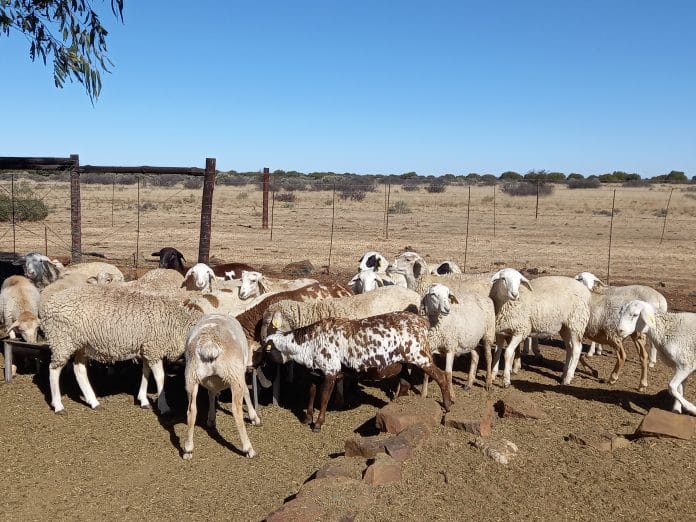Estimated reading time: 0 minutes
- Although game and large stock are the main targets of screwworm, this parasite can also affect small stock, horses and dogs.
- The cattle blowfly is especially prevalent in the Mpumalanga Lowveld, Limpopo, the Eastern Cape and KwaZulu-Natal – its distribution overlaps with that of the bont tick (Amblyomma hebraeum), the parasite responsible for heartwater.
- Screwworm wounds vary from small swellings that resemble an ulcer, to large visibly maggot-infested wounds. Wounds become larger following primary infection.
- Screwworm larvae progress through three stages, each stage accompanied by epidermal sloughing. Larvae in their final stage reach maturity approximately five to seven days after the eggs hatch.
- Abscesses increase susceptibility to screwworm and vaccination against Corynebacterium can help prevent abscesses.
Although game and large stock are the main targets of screwworm, this parasite can also affect small stock, horses and dogs. Dr Johann Stadler, a technical consultant at Antrovet, spoke to Stockfarm about the Bushveld screwworm, which as maggots of the cattle blowfly, Chrysomya bezziana, will thrive in warm, wet conditions and feed on living tissue.
“The cattle blowfly is especially prevalent in the Mpumalanga Lowveld, Limpopo, the Eastern Cape and KwaZulu-Natal – its distribution overlaps with that of the bont tick (Amblyomma hebraeum), the parasite responsible for heartwater.”
Life cycle of the cattle blowfly
This blowfly is short and wide, has a metallic blue colour, a yellow face and reddish-brown eyes. The fly completes its life cycle under moderate conditions with an average temperature of 22°C, within approximately 24 days. In tropical conditions with an average temperature of 29°C, it takes around 18 days.
The blowfly female lays her eggs at the edge of wounds on live, injured animals or at the edge of body openings such as the vulva or perineum. Blowflies are attracted to almost any wound, whether natural (due to fights, predators, thorns, disease and/or tick and insect bites) or man-made (due to shearing, branding, castration or dehorning). Natural wounds that are also prone to infestation are the umbilical cords of newborn animals, and the vulvas and perineal mucous membranes of their mothers post birth. Eggs deposited on mucous membranes make it easy for larvae to burrow into these membranes.
The number of eggs the female lays depend on several factors, but it generally ranges from 100 to 125. Larvae emerge within 12 to 24 hours after the eggs have been laid and start to feed immediately on blood, wound fluids and the underlying tissue of wounds. Larvae burrow head-down into the wound where they cause more damage to living tissue, resulting in loss of production and possible death.
Screwworm wounds vary from small swellings that resemble an ulcer, to large visibly maggot-infested wounds. Wounds become larger following primary infection. Maggots secrete toxins that can make animals sick; secondary bacterial infections are also likely to occur. Wounds left untreated may lead to death. Infected wounds often have a characteristic smell that is attracts pregnant females, leading them to lay more eggs which, in turn, exacerbates the infestation.
Learn how to combat bluetongue in your flock.
Stages of development
Screwworm larvae progress through three stages, each stage accompanied by epidermal sloughing. Larvae in their final stage reach maturity approximately five to seven days after the eggs hatch. They drop to the ground and burrow into the soil. The larvae then pupate within a protective tubular structure formed by the hardening and darkening of the adult larva’s cuticula.
Once developed, the adult flies emerge (usually in the morning) from the puparium and work their way up to the soil surface, extending their wings to strengthen them before flight.
Maturation of pupae is temperature-dependent and varies from seven days at 28°C, to 60 days at temperatures of 10 to 15°C. Males become sexually mature and are ready to mate within 24 hours, whereas the females only respond to the males and mate when they are around three days old. Four days after mating, female flies are ready to lay their eggs and will seek out a suitable host for this purpose. Adult flies live in the veld for two to three weeks.
Treatment of wounds
Macrocyclic lactone, preferably doramectin, which binds to blood proteins and are better at reaching wounds, kills maggots and provides protection for up to 35 days. Wounds can be washed out and treated with a wound spray containing an insecticide. Animals can also be treated with a pyrethroid or organophosphate which deters flies and makes animals less attractive to flies, or a fipronil-containing dressing that kills flying insects.
Secondary infections are treated with antibiotics if an animal is sick and the wound is septic. Anti-inflammatory agents also assist in making an animal more comfortable.
Preventive treatment
- Use a registered dip to protect animals against screwworm.
- Castrate, dehorn and dock lambs’ tails in winter when the risk of infestation is lower.
- For extra protection, use wound spray and the insect growth regulator, dicyclanil, on wounds.
- Use wound spray containing an insecticide on newborn animals’ umbilical cords.
- Producers should apply tick control, especially on ticks with long mouthparts.
- Flies can be controlled using insect growth regulators such as cyromazine.
- Abscesses increase susceptibility to screwworm and vaccination against Corynebacterium can help prevent abscesses. – Dr Johann Stadler, Antrovet
For enquiries, phone Dr Johann Stadler on 072 482 4909 or send an email to vet@antrovet.co.za.


